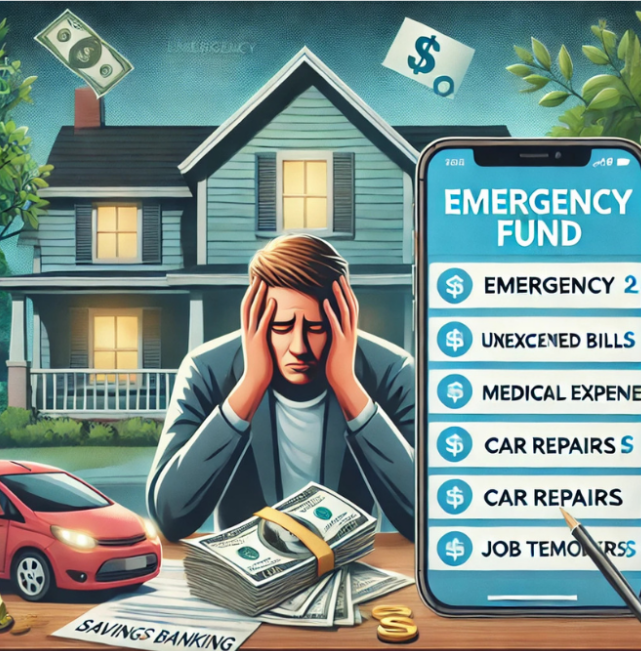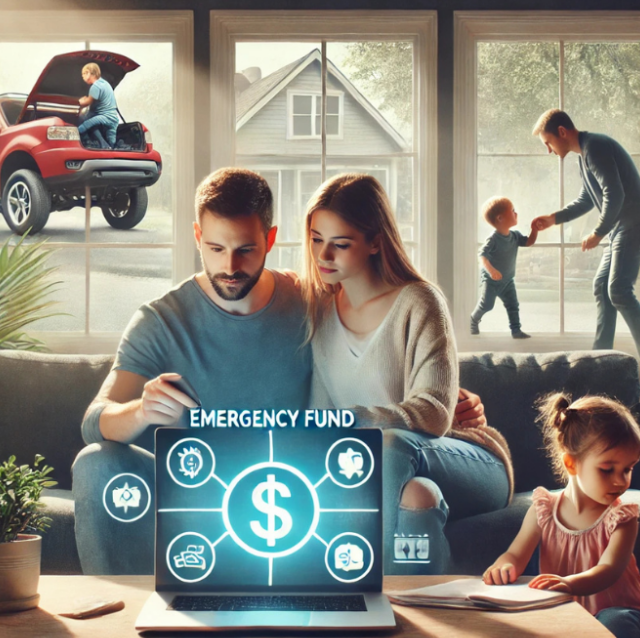 Alright folks, let’s talk about what an emergency fund really is and why it should matter to you. Simply put, an emergency fund is a stash of money set aside for those ‘just-in-case’ moments we all hope never happen but know are likely. Job loss, medical emergencies, car repairs—these are what we’re prepping for. Unlike regular savings, this fund isn’t for vacations or shopping sprees but for genuine financial shocks.
Alright folks, let’s talk about what an emergency fund really is and why it should matter to you. Simply put, an emergency fund is a stash of money set aside for those ‘just-in-case’ moments we all hope never happen but know are likely. Job loss, medical emergencies, car repairs—these are what we’re prepping for. Unlike regular savings, this fund isn’t for vacations or shopping sprees but for genuine financial shocks.
Now, ever wondered why it’s different from your regular savings? Savings might be for future plans or big purchases, like a home or a car. An emergency fund? Its sole purpose is to be your financial safety net. Think of it as a financial cushion against life’s sucker punches.
Historically, the concept of an emergency fund has evolved. Previous generations might’ve just called it ‘rainy day money,’ keeping cash stashed at home. Today, given the complexities of modern life and expenses, having a dedicated emergency fund in a separate, easily accessible account is more crucial than ever. Banks and financial advisors now often recommend setting up such funds as a foundational step in financial planning.
Imagine the peace of mind you’ll get knowing you’re ready for whatever curveballs life throws at you. An emergency fund is the bedrock of any solid financial strategy. When you’re hit by unexpected expenses, you won’t have to scramble for loans or rely on credit cards, which can put you in more financial trouble. Being prepared gives you control and stability, which is priceless in a world filled with uncertainty.
So, let’s look at some real-life stories. I know a friend who lost his job unexpectedly but stayed afloat without stress thanks to his well-stocked emergency fund. Another one faced a medical emergency, and having that fund meant she could focus on recovery instead of hospital bills. These are the moments that underline its significance, making it clear that an emergency fund isn’t just a financial luxury—it’s a necessity.
How to Start Building Your Emergency Fund

Determining the right size of your emergency fund is a crucial first step. Experts recommend having three to six months’ worth of living expenses saved up. This might sound daunting, but don’t stress. Start with a smaller goal, like $500 or $1,000, and build from there.
Budgeting plays a key role in creating your emergency fund. Start by reviewing your monthly expenses and identifying areas where you can cut back. Maybe it’s fewer takeout meals or trimming down subscription services. Redirect these savings directly to your emergency fund. Even small amounts can add up quickly.
Choosing the right type of account is essential. Look for a high-yield savings account that’s separate from your regular checking or savings accounts. This ensures you won’t dip into it for non-emergencies but keeps it accessible when genuine emergencies occur.
Avoid common mistakes that trip people up. Don’t dip into your fund for non-emergencies. It’s tempting to use this money for a great vacation deal or a new gadget, but resist the urge. Keep the fund specifically for true emergencies only.
Consider automation to make saving easier. Set up automatic transfers from your checking account to your emergency fund. This way, you save without even thinking about it. Treat your emergency fund contribution as you would any other monthly bill.
Staying committed can be challenging, but remember why you started. Financial emergencies won’t wait until you’re ready. By steadily building your fund, you’re protecting yourself and your peace of mind. Who doesn’t want that?
Smart Strategies for Maintaining and Growing Your Emergency Fund

Regular contributions are the backbone of a robust emergency fund. Aim to add a fixed amount each month. It doesn’t have to be a huge sum; consistency is more important. Picture it like watering a plant. Regular care leads to healthy growth.
Automate your savings to make it effortless. Set up an automatic transfer to your emergency fund each payday, so you never forget to contribute. It’s like setting your money on autopilot, ensuring you stay on track without extra effort.
Periodically reassess your emergency fund to make sure it aligns with your current lifestyle and expenses. Did you move to a bigger house or have a new addition to the family? Your emergency fund might need a boost to cover the updated living costs.
Look at safe, low-risk investments if your emergency fund grows beyond what’s immediately necessary. High-yield savings accounts, money market accounts, or even short-term certificates of deposit could offer better returns without locking away funds for too long.
Balancing your emergency fund with other financial goals is key. Keep growing your emergency fund, but don’t neglect other priorities like retirement savings or paying down debt. It’s all about finding the right financial harmony.
Utilizing Your Emergency Fund Wisely in Times of Crisis

Recognizing a financial emergency is the first step. This might be a sudden job loss, an urgent medical procedure, or critical home repairs. It’s tempting to tap into your fund for smaller inconveniences, but keep it reserved for truly unexpected and urgent expenses.
Being smart about using your fund means evaluating the situation carefully. Avoid the impulse to deplete your fund completely unless absolutely necessary. Consider partial withdrawals where possible and look for ways to cut down other expenses first.
Once you’ve used your emergency fund, replenishing it should be a priority. Create a plan to build it back up over time. It’s alright if it takes a while; the important thing is to start rebuilding as soon as you can.
Handling the emotional aspects of financial crises is just as important. Financial stress can be overwhelming, but having an emergency fund can lessen the burden. Take a moment to acknowledge the relief of having a safety net, and focus on the steps you need to take to recover.
Seeking professional financial advice can be a game-changer if you’re unsure about managing financial crises. Financial advisors can offer guidance tailored to your situation, helping you make the best decisions for using and rebuilding your emergency fund.

Personally I’ve always have a hard time to build my emergency fund. Every time I had one, I always had an issue where I had to spend all of my money. So I’ve stooped but nowadays I want to build one even if it’s difficult. For me, I decided to pick up what’s the most expensive thing I had to replace in my house in case of damage. And that’s the amount of my emergency fund!
I completely understand how challenging it can be to build an emergency fund, especially when unexpected expenses keep popping up. It’s great that you’re determined to start again, even though it’s difficult. Your approach of using the most expensive household item as a benchmark for your fund is smart—having a clear goal makes it easier to stay focused.
One suggestion is to start small, even if it’s just setting aside a little at a time. Over time, those small amounts will add up, and you’ll be better prepared for emergencies without feeling overwhelmed. Keep pushing forward—it’s definitely worth it in the long run!